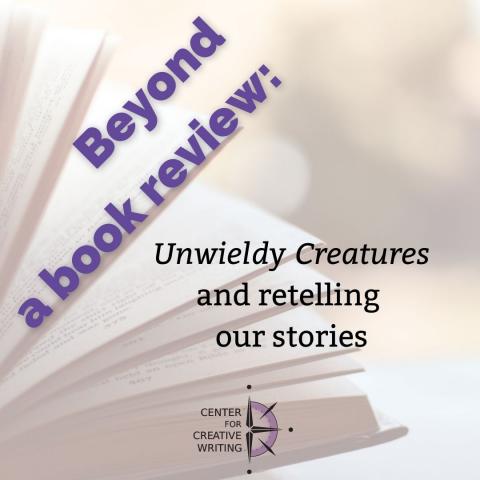
Shawna Ayoub moves "beyond the book review" in not only recommending great books by diverse writers, but highlighting a technique to apply to your own writing.
Unwieldy Creatures, by Addie Tsai
Addie Tsai’s Unwieldy Creatures is a queer, POC retelling of Mary Shelley’s Frankenstein with a modern twist. From the opening page, this book had me transported into its world. I read it in two sittings, eager to turn to the next page before I’d finished the one I was on. I deem books to be “good” when they transport me, and this one did—first, through the story of Plum. Then, within that, through the story of Dr. Frank, a queer scientist whose goal is procreation without sperm or egg, and the nonbinary creation she abandons.
I love science fiction. I love stories in stories. But I also love Frankenstein. When writers rework a famous and beloved tale, they put themselves at risk to get it wrong.
Instead, Tsai created a world far more real than that of Frankenstein, and I think the reason they were able to do that is they had a familiar structure within which to work. It was cozy to travel into a story already known to me but retold with more relatable characters—in this case, queer characters of color. That coziness offset the harder topics of abandonment and exile, experiences ubiquitous in the queer community. Tsai crafted characters working to find themselves in a society not built for them. That’s a story leveled with meaning I find personal.
Which is not to say I think this book is only for people like me. After all, I found my own queerness and meaning in Frankenstein, and it did not develop characters that spoke to who I was when I read it. We bring what we are to what we read.
No, the truth is that Unwieldy Creatures is a good read because it is well-written and compelling. Those are reasons I like this book. I love this book because makes use of one of my favorite writerly moves: the retelling.
The inherent structure of a good retelling
Consider this: How often do we come to our own stories with a detailed map? When writing nonfiction, which most of the writers I work with do, we are rewriting histories. Renaming, reframing, but always looking at the same content, albeit from different angles. This type of writing has therapeutic effects. Its meaning lies in its action; it is an endeavor we undertake because we need to get something out or set something right or understand something confusing.
With retelling, we have an end point even though we might not know where we are going when we embark. The knowledge of that end point allows us to put more energy into answering the important questions: What happened? and How do I feel about it?
Memory is a sticky, windy ball of all the paths we’ve walked rolled up together. Teasing out a single thread and laying it down allows us to examine how we became who we are, and whether we have become who we want to be. It allows us to grow through critical examination of the thoughts and experiences now represented as words on the page. As real. As our truth.
What comes from retelling is often relief. Or, at the very least, release. When we know what happened, we can decide how we feel about it. What was nebulous, through writing, becomes tangible. From there, we can publish it, burn it, eat it, or delete it. What’s important is that through telling and retelling, we give ourselves choices.
With that said, the stories we choose to retell need not be difficult ones. Instead, we can recall a happy day in the sun as a child. What about the stories we tell about who we are when getting to know someone new?
A writing exercise
Think back on what stories you retell and why. Perhaps try retelling one now. Set a timer for 15 minutes and see what comes out. Afterward, check in with yourself on how you feel about the story you told. What was it like to write when you already know the ending, and to be writing toward something?
Purchase Unwieldy Creatures on Bookshop.org (and support independent bookstores across the U.S.)
Will you read Unwieldy Creatures? Have you tried, or will you try, writing a “retelling” story? Share with us in the comments.
Want to receive tips and inspiration like this in your inbox every Sunday morning? Join our email list community! You will receive weekly advice, a year’s worth of weekly writing prompts as a FREE download, and be eligible to participate in our monthly photo prompt contest for a chance to share an original piece of writing with our community of more than 2,500 writers.
